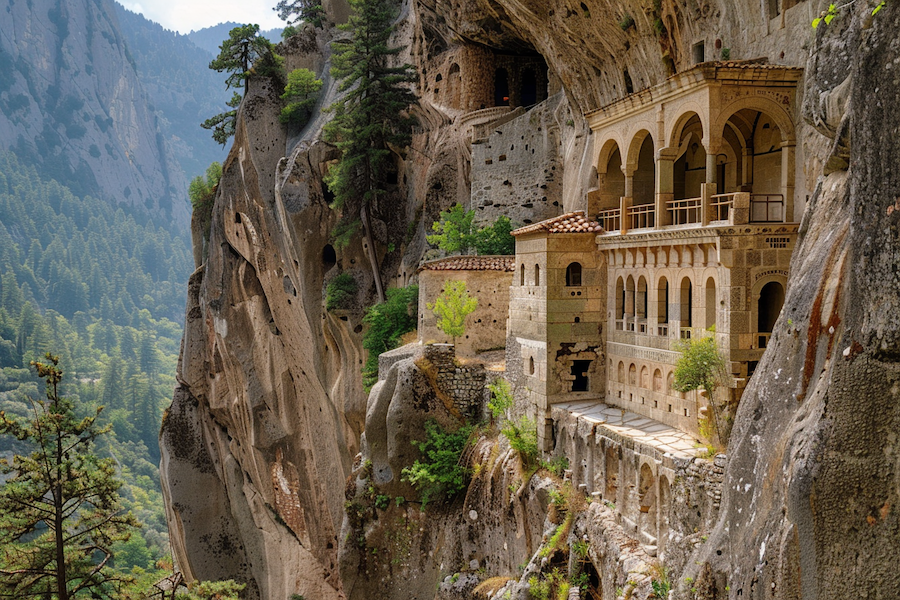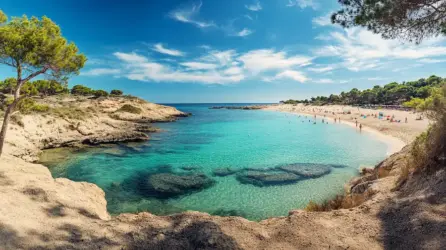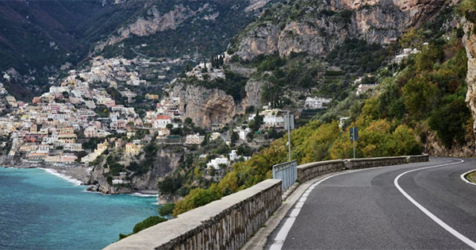Sumela Monastery: A Spiritual Beacon Nestled in Turkey’s Verdant Mountains
Perched on the steep cliffs of the Altındere Valley in Turkey’s Black Sea region, the Sumela Monastery is a breathtaking testament to faith, perseverance, and architectural ingenuity. This ancient Greek Orthodox monastery, also known as the Monastery of the Virgin Mary, has fascinated pilgrims, historians, and travelers for centuries with its stunning natural backdrop, intricate frescoes, and rich historical tapestry.
A Journey Through Time

Founded in the 4th century AD under the Byzantine Empire, the Sumela Monastery’s origins are shrouded in legend. According to tradition, two Athenian monks, Barnabas and Sophronios, were led to the site by a vision of the Virgin Mary, where they discovered an icon of the Virgin, believed to have been painted by the Apostle Luke. Over the centuries, the monastery was expanded and fortified, reaching its zenith in the 13th and 14th centuries, when it became a renowned center of learning and spirituality.
An Architectural Marvel Clinging to the Cliffs
The Sumela Monastery’s construction, clinging to a sheer rock face nearly 1,200 meters above sea level, is an awe-inspiring feat of engineering. Accessible by a steep path winding through the forest, the complex includes a rock church, chapels, kitchens, student rooms, a guesthouse, a library, and a holy spring. The monastery’s main church is adorned with remarkable frescoes that cover virtually every inch of its interior walls and ceiling, narrating scenes from the Bible and the life of Jesus Christ.
A Symbol of Cultural Confluence
Throughout its history, the Sumela Monastery has stood as a symbol of cultural and religious confluence, embodying the diverse historical currents that have swept through the region. Despite being a Greek Orthodox monastery, it has been revered by people of various faiths, including Orthodox Christians, Muslims, and other religious groups, reflecting the area’s multicultural tapestry.

The Monastery’s Modern Rebirth
After years of abandonment and silence following the population exchanges between Greece and Turkey in the 1920s, the Sumela Monastery has experienced a renaissance of interest in recent decades. The Turkish government initiated restoration efforts to preserve the monastery’s architectural and religious significance. Today, it welcomes thousands of visitors from around the world, drawn by its spiritual legacy, artistic beauty, and the breathtaking natural scenery of the Altındere National Park.
Visiting the Sumela Monastery
For those planning to visit, the journey to the Sumela Monastery is as memorable as the destination itself. The trek through the lush, verdant landscape of the national park offers glimpses of the region’s rich biodiversity and the majestic beauty of the Black Sea mountains. Upon arrival, visitors are rewarded with the sight of the monastery’s iconic façade, a harmonious blend of nature and human craftsmanship.
A Testament to Endurance and Faith

The Sumela Monastery remains one of Turkey’s most cherished cultural and historical landmarks, a place where the past and present converge against a backdrop of staggering natural beauty. It stands as a testament to the enduring power of faith and the human spirit’s capacity to create sanctuaries of peace and beauty in the most challenging environments. As a spiritual beacon and a marvel of Byzantine architecture, the Sumela Monastery continues to inspire awe and reverence, beckoning travelers to its ancient halls to witness the legacy of centuries carved into the heart of the mountains.




















